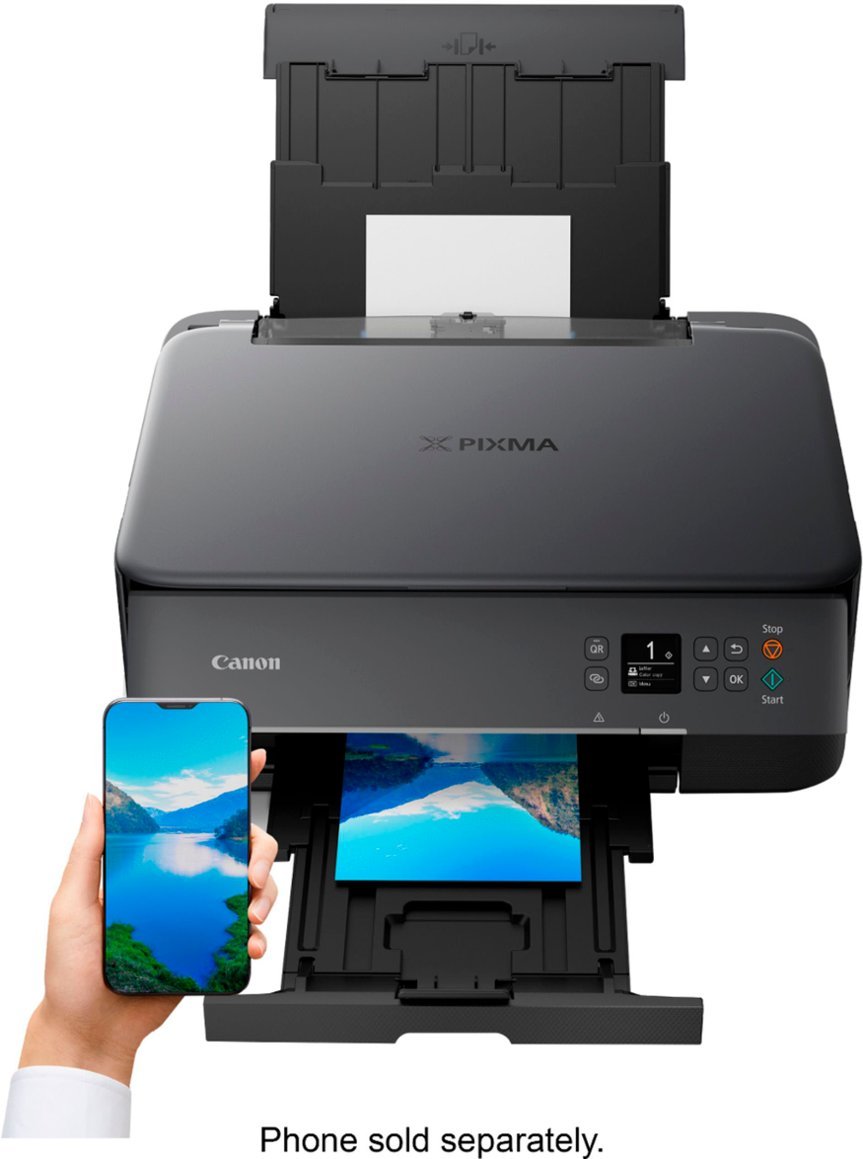Connecting a printer to a Wi-Fi network can seem challenging, but it’s actually quite simple with the right guidance. To connect an HP printer to Wi-Fi, use the Wi-Fi Protected Setup (WPS) button on your router and the Wi-Fi button on your printer. This will allow your printer and router to communicate and establish a connection.
Printers without a touchscreen typically require holding the Wi-Fi button for a few seconds until the light starts flashing. For models like the HP Deskjet and ENVY series, you might need to press both the Wi-Fi and Power buttons located on the back of the printer until the wireless light begins to blink.
Ensuring that both your computer and printer are connected to the same Wi-Fi network is crucial. You can add the printer to your Windows 10 setup by going to Devices, selecting Printers & Scanners, and clicking on “Add a printer or scanner.” If the printer isn’t listed, make sure it’s in setup mode as described in the user manual.
Seamless Printing: Your Guide to Connecting a Printer to WiFi
Before You Start
Ensure you have your Wi-Fi network name (SSID) and password handy. Your printer should be within range of your router. Check the printer manual for specific instructions, as steps may vary.
Connecting Your Printer
The connection method depends on your printer model:
| Connection Method | Description | Common Steps |
|---|---|---|
| Using the Printer’s Control Panel | Most modern printers have a touchscreen or buttons to navigate menus. | Access the printer’s Wi-Fi settings. Select your network and enter the password. Follow the on-screen prompts to complete the setup. |
| WPS (Wi-Fi Protected Setup) | If your printer and router both support WPS, it’s a quick way to connect. | Press the WPS button on your router. Within two minutes, press the WPS button on your printer. The devices should automatically connect. |
| Using a USB Cable (Temporary) | Some printers require a temporary USB connection for the initial Wi-Fi setup. | Connect the printer to your computer with a USB cable. Use the printer software or app to set up the Wi-Fi connection. Once connected, you can disconnect the USB cable. |
Troubleshooting Tips
- Restart: If you encounter issues, try restarting your printer and router.
- Check Range: Ensure your printer is within range of your Wi-Fi router.
- Update Drivers: Download and install the latest printer drivers from the manufacturer’s website.
- Check Firewall: Your computer’s firewall might block the printer’s connection. Check the settings and adjust if needed.
Additional Tips
- Direct Wi-Fi: Some printers offer a “direct Wi-Fi” mode, creating their own network for your devices to connect to.
- Mobile Apps: Many printer manufacturers offer mobile apps that simplify the setup process and allow you to print from your phone or tablet.
- Printer Software: Install the printer software on your computer to access additional features and settings.
Key Takeaways
- Use WPS buttons on router and printer for easy connection.
- Hold Wi-Fi button until light flashes for non-touchscreen models.
- Ensure computer and printer share the same network.
Understanding Wireless Printers and Connectivity
Wireless printers help users print from a variety of devices without needing physical connections. Learning the fundamentals and connectivity methods is key to a successful setup.
Fundamentals of Wireless Printing
Wireless printers use Wi-Fi, Bluetooth, or other wireless protocols to connect to devices. They can print from computers, laptops, tablets, and smartphones.
Most modern models are designed to connect easily to home or office networks. They connect via a Wi-Fi network or Wi-Fi Direct, which allows direct communication between the printer and a device without needing a router.
Wireless printers require the same Wi-Fi network for both the printer and the device. This ensures the printer can receive commands and print jobs smoothly.
Printer Connectivity Methods
Wi-Fi Connection: Usually involves setting up the printer using the manufacturer’s instructions. This might include pressing the WPS button on the router or entering network details via the printer’s control panel.
Wi-Fi Direct: Allows direct connections between the printer and a device without a network. This is useful for quick and easy printing.
Bluetooth: Some models support Bluetooth, enabling printing from nearby devices. This requires pairing the printer with the device.
USB Cable: Although not wireless, a USB cable can be used for initial setup or if wireless options fail.
Step-by-Step Connection Guide
Setting up a printer on a Wi-Fi network usually consists of two main parts: preparing the printer and network, and then connecting the printer to Wi-Fi.
Preparing Your Printer and Network
Before connecting the printer to Wi-Fi, ensure it is ready. Plug the printer into an electrical outlet and turn it on. Check the user manual for specific instructions pertinent to your printer model.
Confirm the printer supports wireless connectivity. Modern printers from brands like HP, Canon, and Brother likely support Wi-Fi. Ensure the printer is placed within range of your wireless router for a stable connection. Also, note the SSID (network name) and password.
Ensure the network settings are correct. Your wireless router should be functioning well. If the network has issues, troubleshoot it first. It helps to update the printer’s firmware if updates are available to support the latest security keys and protocols.
Connecting Printer to Wi-Fi
Begin by accessing the printer’s control panel. Navigate to the network settings menu. Choose the Wi-Fi setup option. Many printers offer an automatic Wi-Fi Protected Setup (WPS) option. If your router supports WPS, press the WPS button on the router and the one on the printer.
If WPS isn’t available, choose the standard Wi-Fi setup method. Select your network’s SSID from the list available. Enter the Wi-Fi password when prompted. For HP printers, the HP Smart app can streamline this process by guiding you with prompts.
For Mac users, go to System Preferences, click on “Printers & Scanners,” and select “Add Printer.” Windows users should navigate to “Settings,” then “Devices,” followed by “Printers & Scanners” to add the printer. Verify the printer is on the same network as the computer.
After connecting, print a test page to ensure the printer is operational. If problems persist, refer to the manual or support website for further troubleshooting steps.
Frequently Asked Questions
The following questions address common concerns and provide clear instructions to help users connect various printer brands to WiFi. They also offer troubleshooting tips and explain how to find a printer on a network after setup.
How do I connect my Canon printer to my WiFi network?
To connect a Canon printer to WiFi, turn the printer on. Press and hold the WiFi button until it flashes. Go to the computer or mobile device and select the printer’s network name. Enter the password when prompted and complete the installation.
What steps are needed to connect an HP printer wirelessly to a network?
For an HP printer, use the HP Smart app. Turn the printer on and ensure it is ready. Open the app, click on the plus sign (+) to add a new printer, and follow the on-screen instructions to connect the printer to WiFi.
How can I connect my Brother printer to a WiFi network?
Start by turning on the Brother printer. Press the Menu button and navigate to Network settings. Select WLAN, then Setup Wizard, and let the printer search for available networks. Choose your network, enter the password, and follow any prompts to complete the setup.
What are the common issues preventing a printer from connecting to WiFi?
Common issues include the wrong WiFi password, the printer being too far from the router, or outdated printer firmware. Ensure the printer is turned on and connected to the correct network. Check for any error messages on the printer’s display.
What are the various methods available for connecting a printer wirelessly?
Printers can connect wirelessly through WiFi Protected Setup (WPS), the printer’s control panel, or using a dedicated app like HP Smart. Some printers also allow connection via Bluetooth or a direct WiFi connection (WiFi Direct).
How do I locate my printer in the network after establishing a WiFi connection?
To find the printer on the network, go to your device’s settings. Navigate to Printers & Scanners. Select your printer from the list. If it doesn’t appear, try refreshing the list or using the “Add a Printer” option to locate it.







